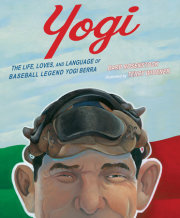Chapter 1
FOOL’S EVE
Rap. Rap. Rap.What was that sound?
Half an hour after the light had been snuffed out, Maggie and
Kate Fox snuggled under the covers. On early spring nights in rural
Hydesville, New York, the chill dampness from Mud Creek seeped into
a person’s bones should a foot, or a finger, escape thick layers of homemade
quilts. Maggie, fourteen, and Kate, who had just turned eleven,
peered into the shadows near their parent’s bed across the room. Sure
enough, there was Mother padding about in the darkness. Father relit
the candle and joined his wife in hunting for the cause of the odd noises.
Rap. Rap.The family had just moved in a few months ago, in early December
of 1847. The rented cottage had just four rooms—bedroom, front room,
kitchen, and buttery. Mother and Father crisscrossed the floorboards,
wiggled the front door latch, listened to the individual creak of each stair,
They searched from the slanted loft down to the dirt cellar. Like
last night, and every night of the past week, they found nothing that
might make a strange rapping sound. Maggie and Kate watched their
parents give up and climb back into bed. Father blew out the candle.
Mother closed her eyes.
Rap. A mystery.
The unsettling sounds continued night after night until Mother felt
“almost sick.” The weather that spring of 1848 wouldn’t settle either.
After a few warmer days, on March 29 it turned so cold that around
midnight an ice wedge stopped the constant crash of New York’s Niagara
Falls. Religious feeling had been whipped up by waves of Christian
revivals throughout the western part of the state. In Niagara’s eerie
silence, some of the newly faithful predicted miracles, others the world’s
end.
Maggie and Kate’s much older brother, David, stopped by that
Friday, March 31. He tried to soothe Mother’s complaints about the
house’s strange sounds. David reminded her that soon they’d be moving
out of this tiny rental to a new home on his nearby peppermint farm.
The rappings were probably “the simplest things in the world.” Before
he returned to his wife and children, David told Mother to ignore the
nighttime noises and get a good night’s sleep.
The wind whistled across the marsh grasses that afternoon. Father
stayed in the front room with his Bible. Maggie, Kate, and Mother went
to bed before the sun set. As the bedroom darkened . . .
Rap.Five minutes passed.
Rap. Rap.Kate sat up and snapped her fingers.
“As fast as she made the noise with her hands or fingers, the sound
was followed up in the room,” Mother would later explain.
Snap. Snap. Snap.
Rap. Rap. Rap.In the dim light, Maggie said, “Now do this just as I do. Count one,
two, three, four,” while clapping her hands.
Clap. Clap. Clap. Clap.
Rap. Rap. Rap. Rap.Were the knocks responding? Mother ordered, “Count ten.”
Ten raps sounded like a drumbeat.
Kate touched two of her fingers together, lightly, without making a
sound. Once, twice, three times.
Rap. Rap. Rap.“Only look, mother! It can see as well as hear!” said Kate.
It? What was It? And what could It know about her family? Mother
asked the night sounds to tell her the number of children she’d born.
Rap. Rap. Rap. Rap. Rap. Rap. Rap.Seven. Everyone knew the Fox family had six children—Leah, Maria,
Elizabeth, and David, now grown; Maggie and Kate, still at
home. Mr. and Mrs. Fox were lucky parents; about half of American
babies born in the mid-1800s died before their fifth birthday. There was
no protection from common childhood illness like tuberculosis, rheumatic
fever, diphtheria, or whooping cough. But the Foxes hadn’t entirely
escaped that all-too-common tragedy. They’d buried a stillborn baby
years back. No one in Hydesville knew. Seven was the correct number.
Stunned, Mother asked the night air if the mysterious sounds were
made by a human. The answer? Total silence.
Then Mother asked, “Is it a spirit?”
Rap!Hearing his girls’ voices, Father entered the bedroom. He found
his wife convinced that she was speaking to an invisible presence from
beyond the grave. Mother Fox later insisted she was “not a believer in
haunted houses or supernatural Appearances.” But a mystic strain ran
through Mother’s extended family. Her sister had visions of her future
headstone, and her mother was known to fall into a dreamlike state and
predict neighbors’ funerals weeks before their deaths took place.
Maggie and Kate knew these family tales. Like most young people
of their time, the sisters also grew up with popular ghost stories like
author Washington Irving’s “The Legend of Sleepy Hollow” and
Methodist founder John Wesley’s family haunt, “Old Jeffrey.” Ghosts
were everywhere in nineteenth-century America. Now, it seemed, the
Fox family had one of their very own.
Mother intended to find out what this particularly noisy spirit wanted.
By asking simple yes or no questions, listening for raps or silences,
Mother learned that their spirit was a man. He’d been fatally injured
in the Fox family’s cottage. She asked how old he was when he died.
Thirty-one raps sounded, one right after the other.
Mother asked, “Will this noise continue if I call in my neighbors?”
A pause, and then . . .
Rap.She sent her husband into the cold night to a nearby neighbor, Mrs.
Redfield.
Mrs. Mary Redfield hadn’t known the family long; but she’d run
into the girls on the main road a few days back.
Such friendly, prettygirls! Maggie had brown hair, dark eyes; skin like a porcelain doll.
Raven-haired Kate’s best feature was her unusual gray-violet eyes. They
were “smart girls, bright, full of life.” The girls had told Mrs. Redfield
some wide-eyed tale about hearing strange sounds in the night.
Mary Redfield knew the parents, Peggy and John Fox, to be sensible
folk. She hadn’t given Maggie and Kate’s silly story a second thought.
Yet, here was John Fox at her door, after dark, insisting that
Mrs. Redfield listen to these strange sounds immediately. Mary Redfield
grabbed a wrap and followed her good neighbor out into the cold, spring
night. She expected to endure a few minutes of foolishness with the Fox
girls and be in bed before nine.
Instead, she found Maggie and Kate Fox in bed, clinging together,
“much frightened.” Their mother, Mrs. Peggy Fox, was sitting on the
bed, her face unearthly pale. To comfort the woman, Mrs. Redfield sat
beside her.
“Now count five,” she heard Peggy mumble.
Mary Redfield realized that Peggy Fox was talking to the night air.
The poor woman has lost her reason, Mary thought. Then, she heard
a rhythm, like a beating heart.
Rap. Rap. Rap. Rap. Rap.“Count fifteen,” said Peggy.
Fifteen raps shook the bedstead. Mary both heard the sounds and
felt them jar her bones.
What in this room could be making such a powerfulsound?Peggy Fox asked the spirit to give Mary Redfield’s age.
Thirty-three raps sounded one right after the other. Correct. Mary
ruffled through the possibilities. Who knew her exact age except her
husband?
Mrs. Redfield took over the questioning, “If you are an injured
spirit, manifest it by three raps.”
Rap. Rap. Rap.She repeated several questions trying to prove that the raps sounded
randomly. All were answered correctly, same as before. After an hour or
so with the rappings, Mrs. Redfield agreed, a spirit had indeed entered
the Fox family’s humble cottage.
Across the bedroom, Maggie and Kate trembled. Mrs. Redfield
consoled them. She told the girls they would not be harmed. As a
Christian, Mary trusted that this spirit was from God. In one of the
earliest accounts of that night’s events, Kate replied, “we are innocent—
how good it is to have a clear conscience.”
Mrs. Redfield didn’t ask Kate why her conscience was bothered.
Then again, it’s hard to think straight when talking to a dead man.
Mrs. Redfield fetched her husband. When they returned, loud raps
again echoed about the Fox home. As the night went on, the Redfields
brought their neighbors, who brought other neighbors. Question by
question, guess after guess, the small group learned further details of the
spirit’s story.
The spirit had been a traveling peddler.The peddler had been murdered.His throat was cut with a butcher knife! He’d been robbed of $500!How many years ago? Rap. Rap. Rap. Rap. Rap.Midnight brought a new day, Saturday, April 1. At least a dozen
of the Fox family’s neighbors remained crammed in the house, asking
questions and receiving rapped answers. Like Mary Redfield, they came
anticipating a bit of nighttime fun, until the raps correctly answered
personal questions about family members, living
and dead. In the early
morning hours, the rappings simply stopped. The rumors about the two
girls who had first talked to the peddler’s spirit were just getting started.
Copyright © 2025 by Barb Rosenstock. All rights reserved. No part of this excerpt may be reproduced or reprinted without permission in writing from the publisher.












